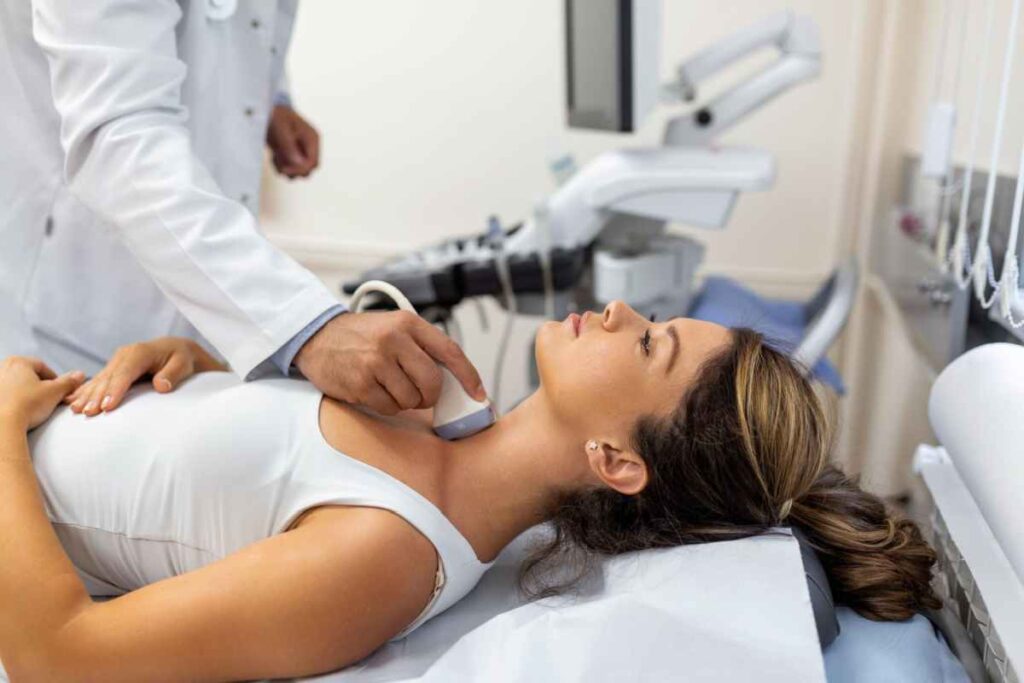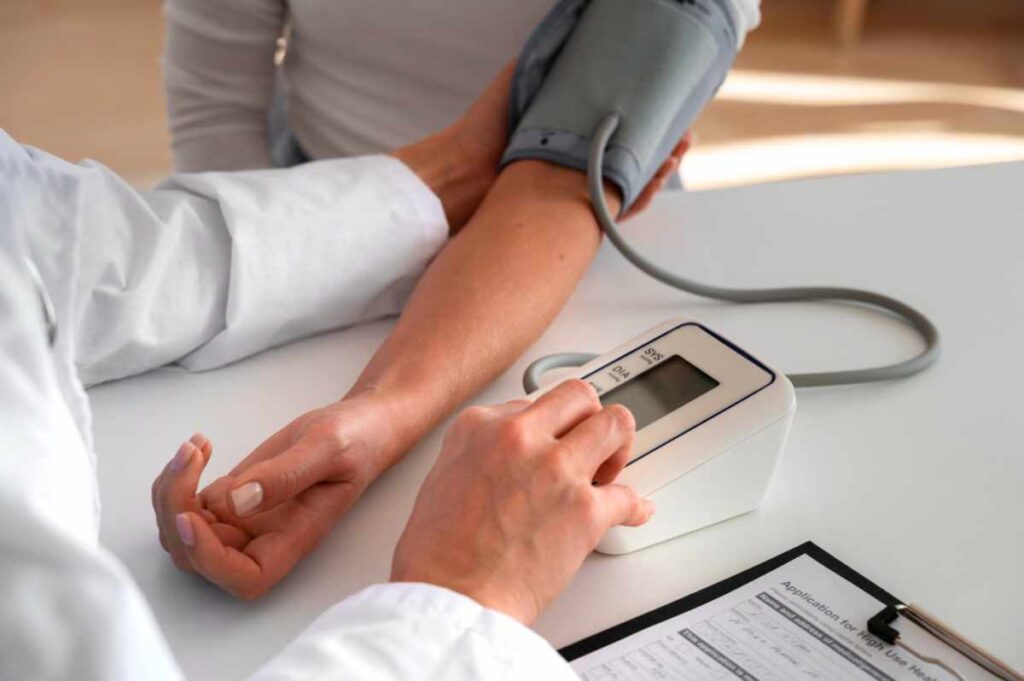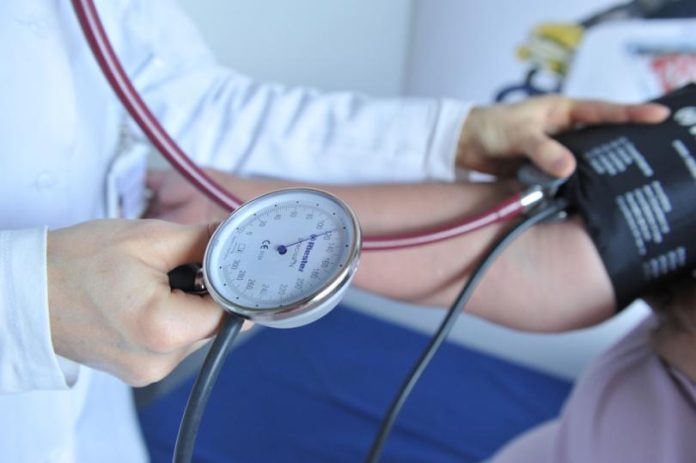Extrasystoles are a common rhythm disorder, which in many cases is harmless. However, it is good to consult a cardiologist who will assess the causes and whether treatment is required. Patients usually describe the symptoms as heart skip or even momentary cardiac arrest. Another possible symptom is a tightness in the throat. Extrasystoles can be controlled after the root cause is identified and appropriate treatment is prescribed.
In medicine, extrasystoles are also known as premature ventricular contractions (PVCs) or premature atrial contractions (PACs). These are abnormal heartbeats that occur outside of the normal rhythm. They are characterized by an early or premature heart rhythm originating in either the ventricles (PVCs) or the atria (PACs) of the heart.
In a normal heartbeat, electrical signals travel through the heart in a coordinated fashion, starting at the sinus node (the heart's natural pacemaker) in the right atrium. This causes the chambers of the heart to contract in a synchronized pattern, pumping blood efficiently.
Extrasystoles - causes are abnormalities in electrical signals, stress, electrolyte imbalance, heart disease and others.
However, in the case of extrasystoles, an electrical signal may arise prematurely from a different area of the heart, causing an additional contraction that interrupts the regular rhythm. These premature contractions may feel like a skipped or extra beat and may be accompanied by other sensations such as fluttering or throbbing in the chest.
Extrasystoles can be caused by a variety of factors, including: stress, anxiety, caffeine or nicotine consumption, certain medications, electrolyte imbalance, heart disease, and structural abnormalities of the heart.
In many cases, extrasystoles are harmless and do not require specific treatment. However, if they are frequent, persistent, or associated with other symptoms, a medical evaluation may be necessary to identify and address any underlying conditions.
Extrasystoles are always alarming, but they are often not dangerous or life-threatening. However, if you experience severe symptoms such as chest pain, dizziness or fainting, or if you have a known heart condition, it is recommended that you seek medical attention immediately. The doctor will perform diagnostic tests such as an electrocardiogram (ECG) to assess the nature and severity of the extrasystoles and recommend appropriate management strategies.
Treatment of extrasystoles - diet and drugs
Treatment options for extrasystoles depend on several factors, including the frequency and severity of premature contractions, the presence of underlying heart disease, and the impact of symptoms on the individual's quality of life. Here are some general approaches to managing extrasystoles:
Lifestyle changes: In some cases, lifestyle changes can help reduce the frequency and severity of extrasystoles. These may include avoiding triggers such as caffeine, nicotine and alcohol, managing stress through relaxation techniques or counselling, and ensuring adequate sleep and regular exercise.
Medicines for extrasystoles: Antiarrhythmic drugs may be prescribed to suppress or regulate the electrical activity of the heart and reduce the occurrence of extrasystoles. The choice of drug depends on the type of arrhythmia and any underlying heart disease.
Medicines such as beta-blockers, calcium channel blockers or antiarrhythmic drugs such as flecainide or amiodarone. It is important to note that these drugs carry potential side effects. They should be prescribed and monitored by a medical professional.
Ablation and pacemakers as possible treatments
Catheter ablation: In cases where extrasystoles are frequent, persistent, or significantly impact quality of life, catheter ablation may be considered. This procedure involves inserting a thin, flexible tube (catheter) into the heart to identify and selectively destroy the abnormal tissue responsible for generating premature contractions.
Implantable devices: In rare cases where extrasystoles are severe and pose a high risk to the patient, an implantable cardioverter-defibrillator (ICD) may be recommended. The ICD continuously monitors the heart rhythm and delivers an electrical shock to restore a normal rhythm. This happens if a life-threatening arrhythmia occurs, such as ventricular tachycardia or ventricular fibrillation.
Treatment of underlying conditions: If the extrasystoles are caused by an underlying heart disease or other medical problems (hashimoto's, metabolic syndrome, atherosclerosis, diabetes, etc.), the underlying cause should be treated. This may include treating conditions such as coronary artery disease, heart failure or electrolyte imbalances.
The approach to the treatment of extrasystoles is individual. In case of repeated episodes, it is recommended to consult a health professional or cardiologist. He will assess your condition, make an accurate diagnosis and recommend the most appropriate treatment for you.
Are extrasystoles related to hypothyroidism or Hashimoto's disease?

Extrasystoles can be associated with both hypothyroidism and Hashimoto's thyroiditis. The second is an autoimmune condition that results in an underactive thyroid gland. Thyroid hormones play a critical role in regulating the body's metabolism, including heart function.
In cases of hypothyroidism, the thyroid gland does not produce enough hormones. Various cardiac abnormalities can then occur, including arrhythmias such as extrasystoles. The exact mechanism by which hypothyroidism leads to arrhythmias is not fully understood. It is thought to involve changes in the heart's electrical conduction system and increased sensitivity to circulating catecholamines (hormones involved in the stress response).
The thyroid gland regulates the heartbeat
Hashimoto's thyroiditis, an autoimmune disease in which the body's immune system attacks the thyroid gland, can cause hypothyroidism. This means that people with Hashimoto's can also experience extrasystoles as a result of the associated thyroid hormone imbalance.
If extrasystoles are suspected to be related to thyroid dysfunction, tests may be done to assess thyroid function. Thyroid-stimulating hormone (TSH) and thyroid hormone (T3 and T4) levels are routinely tested. Antibodies against thyroid hormones may also be tested. If a thyroid disorder is diagnosed, appropriate treatment, such as hormone replacement therapy with levothyroxine, is considered. This can help to normalize the functioning of the thyroid gland, thereby alleviating the cardiac arrhythmias associated with it.
Although there is a link between extrasystoles and thyroid dysfunction, not everyone with hypothyroidism or Hashimoto's will develop symptoms of arrhythmia or other cardiovascular problems. Each individual's response to thyroid dysfunction may vary. Factors such as the severity of the condition, overall cardiovascular health and other individual characteristics play a role.
Metabolic syndrome and extrasystoles - is there a connection?

The metabolic syndrome is a group of conditions that occur together, including abdominal (belly) obesity, high blood pressure, high blood sugar levels. In addition, there are also elevated triglycerides and low levels of high-density lipoprotein (HDL – good) cholesterol. This syndrome is associated with an increased risk of cardiovascular disease, including heart attacks, strokes, and other heart-related complications.
Although there is no direct cause-and-effect relationship between metabolic syndrome and extrasystoles, some studies have shown an association between the two. Metabolic syndrome can lead to various changes in the cardiovascular system. These are endothelial dysfunction, inflammation and changes in autonomic nervous system function. All of which can affect the heart's electrical conduction system and potentially contribute to arrhythmias, including extrasystoles.
In addition, individual components of the metabolic syndrome, such as hypertension (high blood pressure) or insulin resistance (which can lead to high blood sugar levels), are independently associated with an increased risk of arrhythmias, including extrasystoles.
Obesity, a sedentary lifestyle also adversely affect the heart

It is worth noting that the relationship between metabolic syndrome and extrasystoles is complex and multifactorial. Obesity, a sedentary lifestyle, sleep apnea, and other comorbidities are common in individuals with metabolic syndrome. They can also contribute to the development of arrhythmias.
Management of metabolic syndrome involves addressing its individual components through lifestyle changes and, in some cases, medications. These interventions may include a healthy diet, engagement in regular physical activity, weight loss. It is important to control blood pressure, blood sugar levels and high blood fat levels. By effectively managing metabolic syndrome, people can reduce their risk of developing arrhythmias and related complications.
If you have metabolic syndrome and experience symptoms such as extrasystoles or other cardiac arrhythmias, it is recommended that you consult a health professional or cardiologist. They can assess your specific situation, conduct appropriate tests, and recommend the most appropriate treatment strategies.
Monomorphic ventricular extrasystoles - what is their classification?
Ventricular extrasystoles are also known as premature ventricular contractions (PVCs). They can be classified based on several characteristics. Here are some general classifications of ventricular extrasystoles.
Frequency
Isolated premature ventricular contractions are single premature ventricular contractions that occur sporadically, with normal sinus rhythm in between.
Common premature ventricular contractions are either multiple after another or occur at high frequency. The specific threshold for defining frequent PVCs may vary. It is usually considered when more than 5 PVCs per minute or more than 30 PVCs per hour occur.
Two consecutive premature ventricular contractions may be seen in close succession. There are also sequences of three or more consecutive such contractions.
Morphology
Monomorphic PVCs: These PVCs have a consistent shape and appearance in their electrocardiogram (ECG) waveform.
Polymorphic PVCs: These PVCs have different shapes and appearances in their ECG waveform. Polymorphic PVCs may be a sign of more significant underlying heart disease and may require further evaluation.
Origin and location of premature ventricular contractions
Right ventricular (RV) PVCs: These PVCs originate in the right ventricle of the heart.
Left ventricular (LV) PVCs: These PVCs arise from the left ventricle of the heart.
Fascicular PVCs: These PVCs originate in specific regions called fascicles, which are specialized muscle fibers in the ventricles.
Clinical significance
Symptomatic PVCs: These PVCs cause noticeable symptoms such as palpitations, chest discomfort, or shortness of breath.
Asymptomatic PVCs: These PVCs cause no noticeable symptoms and are often discovered incidentally during routine medical examinations or EKG monitoring.
The classification of ventricular extrasystoles is used to help characterize and understand the nature of the arrhythmia. The appropriate classification and management of ventricular extrasystoles should be determined by a medical professional or cardiologist. He can assess the specific situation, perform diagnostic tests (ECG or Holter monitoring). It will provide an accurate diagnosis and treatment plan based on its findings.
Author Ina Dimitrova


